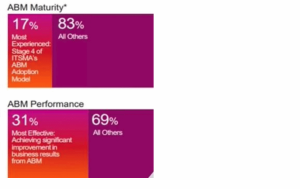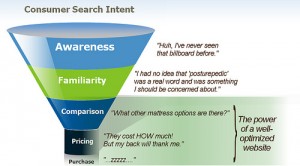Financial technologies are rapidly transforming from futuristic imaginings into an inextricable component of everyday life. Back in 2016, such services as Apple Pay and Samsung Pay were just entering the global market as newfangled inventions, while today, they are used to processing three times more transactions than those made using conventional plastic bank cards. Mobile apps have since largely replaced bank office branches, and the coronavirus pandemic has only accelerated the trend. Taking into account the rapid pace of development of the fintech sector and speed at which modern users adapt to innovations, our experience of interacting with financial institutions is likely to undergo radical changes over the next few years.
Historically, financial institutions were a necessity bred from the need to solve three basic tasks – to preserve and multiply savings, move volumes of funds, and access credit facilities. The need for these services will persist well into the future, but it will evolve. The reason behind such evolution is not just the dwindling number of people resorting to banking services year-on-year, but the emergence of radical new financial technologies associated with the introduction of cryptocurrencies, blockchain networks, and decentralized finance, which are capable of dealing with the same issues that banks were initially founded for. Oftentimes, the new technologies are capable of handling financial tasks even more effectively than their traditional brick-and-mortar counterparts. As an illustration of the trend, 76% of Americans have used mobile apps to complete banking tasks last year, according to a recent study by Ipsos-Forbes.
How Will Banks Change?
The foundation of a new generation of banking services is being laid by both the clients and the banks themselves. The need for increased client convenience will force banks to integrate financial services into routine operations. The banks, in turn, will strive to minimize the costs associated with attracting new clients, and that will result in the shrinkage of costly office branch networks and the transition of most transactions online. Physical client absence at offices will be compensated by advanced mobile applications and direct communication with bank employees.
As inevitable changes are afoot, banks are pinning their hopes on the complete digitalization of their business model. The goal is to customize banking products to suit individual client needs and increase targeting. For instance, online banks will be able to offer tailored lending facilities and insurance to clients looking to buy new vehicles.
But for such a scenario to be implemented successfully, banks will need considerable volumes of information about their clients. Therefore, as the international consulting company Accenture highlighted in its Banking Technology Vision 2021 research, a growing number of banks are starting to create “digital twins” for their clients using big data and artificial intelligence. “By weaving together data from different sources, banks are able to create living models of product lifecycles, customer journeys, operational processes, market scenarios and more,” as the authors stated in the report.
Banks are already offering clients an ever-broadening range of functions for the purpose of collecting data. For example, some offer restaurant table bookings, theatre or cinema ticket purchases, air tickets sales, and even doctor appointments through mobile banking applications.
The continued transformation of the banking sector entails three potential development vectors. The first is operations processing – a function performed by today’s internet providers. However, it is possible that the state may take over the given infrastructure component (or a monopolizing entity controlled by the state), which will find it easier to interact with citizens.
The second vector wades through the expansion of the functions of banks to cater to the growing daily needs of their clients. In this case, banks will have to compete with tech giants and online retailers that have already successfully garnered more client trust than banks ever have. KPMG even introduced a special definition for this trend – invisible banking – implying that an increasing volume of financial transactions is carried out independently by smart devices on behalf of their users. For instance, smart refrigerators can buy groceries by themselves, cars pay for gas at gas stations, TVs buy subscriptions to paid channels, etc.
The third vector of bank transformation foresees its evolution into an advisory and recommendation agent that reaches beyond the financial element. Such an advisory role will allow banks to oversee all transactions, purchases and user activity like health, fitness, nutrition, movement and even career progression. The advisor will be able to draw up customized client budgets, make bargain purchases, offer discounts, provide advice on financial wellbeing, and even give suggestions on how to save money or spend leisure time with greater impressions.
At the same time, banks are unlikely to be able to completely abandon the brick-and-mortar model in the next twenty to thirty years before completely transitioning to online applications. For example, the indigenous people of the Amazon do not want to use or do not use banking applications at all, while in parts of Asia and Africa, where banking services had previously been inaccessible, people are already using applications on a broad scale and have never even been inside a bank office. The given reality speaks volumes about the heterogeneity facing the development vectors of financial technologies.
Payments In The Future
New technologies will inevitably simplify the process of making settlements. In the not-so-distant future, the desire to carry out a transaction will be the only prerequisite for action – the biometrics will do the rest.
Plastic bank cards will be phased out in the next 5 to 7 years, losing the battle to biometrics. A total of over 93% of the participants of a survey conducted by MasterCard in cooperation with Oxford University back in 2015 stated that they preferred to use their biometric data to confirm payments on the internet, rather than enter passwords. The main reason for the popularity of the new technology is the increasing risk of money theft due to the snowballing number of cases of personal data leaks around the world. According to estimates of Global Security Mag from 2019, the majority of consumers (56%) stated that they trust biometric authentication methods more than traditional PIN codes. The share of biometric method proponents has been growing at a steady pace since then.
However, the spread of biometric technologies raises serious concerns among a significant part of the population. The fears are associated with the tightening of state control over the private lives of citizens. In their opinion, the more appropriate vector for the development of the financial sector is its decentralization based on the use of cryptocurrencies.
Bitcoin is already considered an alternative to gold for value preservation. But cryptocurrencies are not limited to Bitcoin alone, as there are dozens of other digital assets that are used for daily settlements, cross-border transfers, investing, trading, and lending.
A new financial system has emerged on the global stage thanks to the advent of blockchain technologies that operate independently of central banks and governments. However, as more states seek to either prohibit cryptocurrencies, or restrict their circulation by placing them under strict control, it is likely that a symbiosis of traditional payments and cryptocurrencies will emerge at some point in the future. Still, some applications available on the market already allow users to operate with both cryptocurrencies and fiat.
A new generation of banks such as MinePlex is creating a wide range of digital assets services that can be used as alternatives to traditional banking products. The bank, or rather a neo crypto bank, offers its users convenient operations with cryptocurrencies and fiat through a single holistic application by combining the stability and liquidity of traditional financial instruments with the security and transparency of blockchain technologies. With the MinePlex Wallet, users will be able to manage their digital assets, make transfers, store, buy and spend any type of currency.
By replicating the successful solutions that allow fiat and cryptocurrencies to be used in conjunction, many digital asset wallets are integrating functionality for fiat-based transactions through the support of bank cards. This combination allows users to safely buy and sell cryptocurrencies.
The DARQ Quartet
The growing pressure from the fintech industry and cryptocurrencies is forcing banks to focus on the implementation of post-digital era technologies, or the so-called DARQ quartet, which includes distributed ledgers technologies, artificial intelligence, augmented reality, and quantum computing, according to the Accenture Banking Technology Vision 2019 study.
In the next 20 years, access to advanced artificial intelligence will become the determining factor in market dominance for both states and companies, including banks. Augmented reality will provide users with extended access to a broader range of information about the world. It will also become the ideal solution for visualizing expenses and predicting savings. According to a study by American Avaya, almost half of all millennials are interested in using real-time cost analysis tools.
The future of financial applications is dawning as financial institutions are working on the transformation of the banking system and the use of advanced technologies.
Business & Finance Articles on Business 2 Community(79)
Report Post







